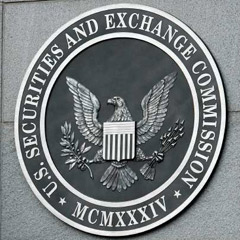
- Some funds may seem like no load funds but actually carry a back end load if sold too soon
- The Security Exchange Commission recommendations for mutual funds can help you find true no load funds to invest in
- The fund operating expense ratio maximum for no load funds is one fourth of one percent. If it is any higher the fund is not really a no load fund according to the SEC
No load funds offer many benefits, and the Security Exchange Commission has made some recommendations when it comes to investing in mutual funds that can help you avoid a lot of confusion, and tell whether you are investing in a no load mutual fund or if the information is misleading. Some funds charge a redemption fee, which is basically a back end load fee, if you hold the fund for less than the period of time specified. These funds may advertise as no load funds, but they do carry commissions and load fees if you try to get out of the investment before the minimum period. Many investors have made this common mistake, and ended up paying a significant amount in load fees for a mutual fund investment that was supposed to be a no load mutual fund.
The following examples of true no load mutual funds that follow the SEC recommendations:
1. Fidelity Spartan Intermediate Treasury Bond Index Fidelity Advantage Fund, trading symbol FIBAX, is a no load funds that follows the recommendations outlined by the SEC. This fund has no load for either the front or back end, regardless of how long you hold the investment, and offers an operating expense ratio of only one tenth of one percent. This is a clue that it really is a no load fund, and not a back end load fund trying to pass off as a no load fund. Only funds which offer an operating expense ratio of one forth of one percent or less are actually no load funds. With a ratio of only one tenth of one percent, Fidelity Spartan Intermediate Treasury Bond Index Fidelity Advantage Fund qualifies. The only downfall to this fund is that a minimum of one hundred thousand dollars is needed for an initial investment, which may be more than you are willing to invest.
2. RidgeWorth Life Vision Conservative Institutional, trading symbol SCCTX, is another mutual fund that meets the guidelines and mutual fund recommendations of the SEC. This fund has no minimum investment, and a fund operating expense ratio of just point one eight percent with no load fees on either end. You can invest in the fund without needing any broker or other professional, and this fund means all of your investment capital starts working for you immediately. This fund invests in the US stock market, and is conservative with the fund investments so there are no excessive risks with your capital.
 3. T. Rowe Price U.S. Treasury Intermediate, trading symbol PRTIX, is a mutual fund which does not charge load fees on the front or back end, but this fund does not classify as a no load mutual fund according to the SEC recommendations for one reason, the operating expense ratio. This ratio for the fund is at point five four percent, which makes it more than double the point two five percent maximum ratio that true no loads funds do not go above. This means that even though this fund may be a great investment and does not charge a load fee up front or when you sell, it does not qualify as a true no load fund according to the recommendations of the SEC.
3. T. Rowe Price U.S. Treasury Intermediate, trading symbol PRTIX, is a mutual fund which does not charge load fees on the front or back end, but this fund does not classify as a no load mutual fund according to the SEC recommendations for one reason, the operating expense ratio. This ratio for the fund is at point five four percent, which makes it more than double the point two five percent maximum ratio that true no loads funds do not go above. This means that even though this fund may be a great investment and does not charge a load fee up front or when you sell, it does not qualify as a true no load fund according to the recommendations of the SEC.
There are many true no load funds out there, but there are also many funds which may be misleading and are assumed to be no load when they actually do not meet the qualifications for this term according to the Security Exchange Commission. Look at the fund operating expense ratio, and make sure to read the funds prospectus carefully, to avoid paying a back end load on a fund you thought was a no load fund.

April 18th, 2009 at 6:59 pm
You really have to watch out for the back end load on no load funds. These funds try to collect as much money as possible on the front but when they can’t they will slip it to you another way.